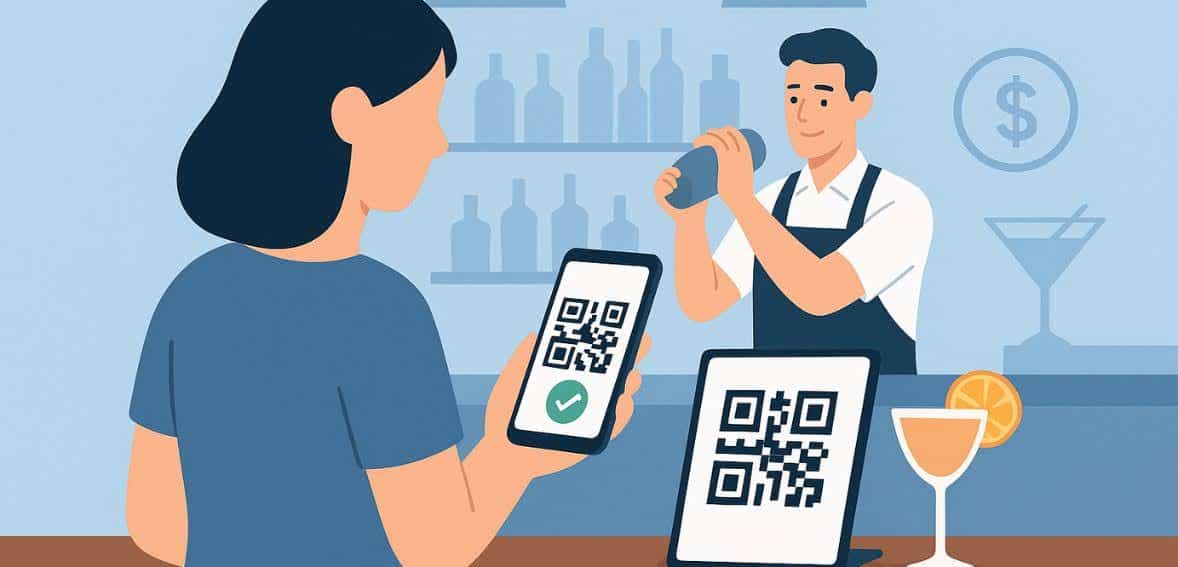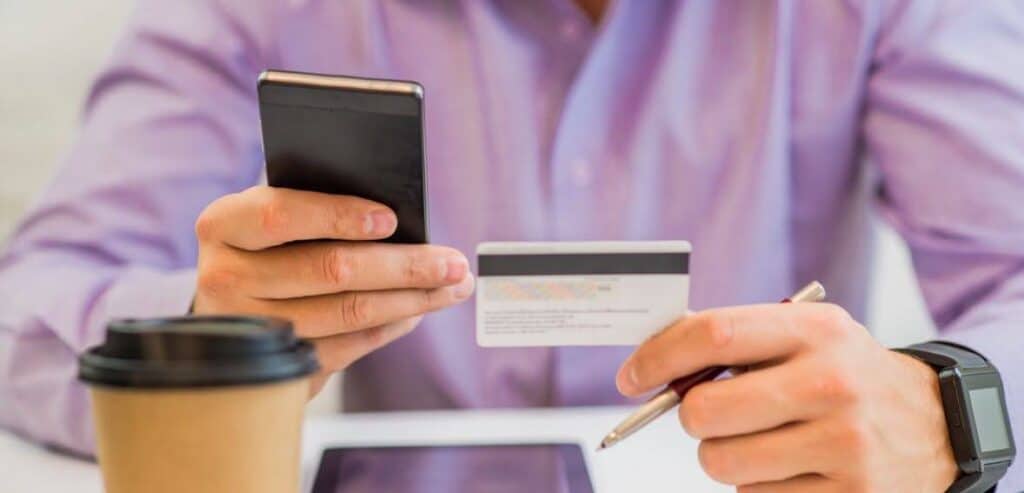
By Georgia Robinson September 25, 2025
Over the past ten years, there has been a significant change in how people pay. Once transforming consumer-business interactions, credit cards are now being replaced by contactless transactions, digital wallets, and mobile payments. Gratuities make up a significant portion of employee pay in many service-based industries, so this shift has brought both opportunities and difficulties.
Consumers now anticipate being able to leave a gratuity by tapping their phone or using a mobile wallet, as opposed to dropping cash into a tip jar. This change reflects broader consumer behavior and is convenient, but it also poses important questions for entrepreneurs.
Does using mobile wallets to provide contactless tips boost employee happiness and patron generosity? Or does it lead to financial, cultural, and operational issues that outweigh the advantages? For businesses that thrive on tips—from cafés and bars to salons, delivery services, and ride-share companies—deciding whether to offer contactless tipping is no longer optional. It is an essential part of adapting to a cashless economy.
The Rise of Contactless Payments in Everyday Life

Contactless payments are now the new standard rather than a passing trend. Customers are increasingly using wearable technology or smartphones in place of cash for daily transactions, making use of services like Samsung Pay, Apple Pay, and Google Wallet.
Cash is no longer the most common form of payment in many cities, particularly among younger customers. Tipping is a natural extension of this cultural change. As fewer people carry physical currency, the custom of leaving a few bills on a table or slipping cash into a tip jar is becoming less common.
As customers switch to contactless payments, service providers and companies that previously relied significantly on cash tips are finding gaps in employee earnings. This gap is filled by providing mobile wallet tipping, which guarantees that workers continue to get tips even in a mostly cashless environment.
Convenience for Customers
One of the main benefits of contactless tipping from the standpoint of the customer is convenience. The awkwardness of looking for cash or writing numbers on a paper receipt is eliminated when you can pay and tip with a single tap. To make the process quick and easy, a lot of mobile wallet platforms even ask users to choose a tip amount before completing the transaction.
Higher tipping compliance is frequently the result of this convenience. When the option is clear and simple, customers are more likely to leave a gratuity. In addition to guaranteeing regular employee pay, this helps businesses increase customer satisfaction because customers value having flexible, modern payment options.
Potential for Higher Tips
Research indicates that when digital options are offered, customers are more likely to tip. A psychological nudge is produced by suggested tip percentages that are shown on contactless terminals or in mobile payment apps. Many customers choose the preset option, which is frequently more than what they might have left in cash, without doing any math or second-guessing.
This may result in higher pay for workers, which immediately improves morale and retention. Businesses in high-turnover sectors, like restaurants and salons, might discover that providing contactless tips gives them a competitive edge in keeping employees. Employers and employees find mobile wallet tipping appealing due to the possibility of larger gratuities.
Transparency and Tracking
Increased transparency is one advantage of digital tipping. Contactless tips are automatically recorded through the payment system, compared to cash tips, which might be underreported or not tracked consistently. Clear records are produced for payroll and compliance needs.
Employers benefit from fewer tip distribution disputes and accurate tax reporting. Transparency also helps employees because they can be sure that their earnings are being tracked accurately and aren’t being mismanaged. Digital systems offer accountability in sectors where misunderstandings about tip pooling or payout can cause conflict.
The Hidden Costs for Businesses

Despite the obvious benefits, there are some disadvantages to providing contactless tips. Processing fees are among business owners’ top concerns right now. Payment processors and card networks usually impose fees on the entire transaction value, including tips. This implies that the company will pay a portion of the tip in fees when a customer uses a mobile wallet to leave a tip.
These costs mount up over time. The expense of handling digital tips can have a big effect on a small café or salon’s profit margins. While some companies decide to absorb the costs, others decide to raise prices or pass them on to employees. Either strategy causes conflict, either by putting financial strain on the company or by making employees unhappy when their tips are reduced.
While contactless tips provide convenience and transparency, businesses must remain aware of the hidden costs of payment processing, as fees on gratuities and transactions can gradually impact overall profitability.
The Timing of Tip Disbursements
The timing of when employees truly receive their tips is one problem with digital gratuities that is frequently disregarded. The transfer is immediate when using cash. However, with mobile wallets, gratuities are paid out via direct transfers or payroll after first being deposited into the merchant’s account.
Employees who depend on daily tips as a source of income may become irate over this delay. The delay for businesses is not always deliberate; rather, it is a reflection of the way banks and processors handle settlements.
Employees may still believe that tips are not being paid. To avoid conflict, companies should be transparent about deadlines and, if feasible, look into payroll integrations that expedite payouts so employees can enjoy contactless tipping without having to worry about money.
Employee Perceptions and Trust
For workers who depend heavily on tips, the introduction of digital gratuities can feel uncertain. Employees may worry about delays in receiving their tips, how fees are handled, or whether they are truly receiving the full amount customers intended to give. Transparency is essential to prevent mistrust.
If businesses are not clear about how contactless tips are managed and disbursed, employees may feel cheated, even if the system is fair. Effective communication and timely distribution are critical. Employers must demonstrate that digital tips are reaching staff promptly and accurately, or risk damaging workplace morale.
Cultural Resistance to Change
Not all clients or staff members feel at ease using digital tipping. The actual act of leaving cash still appeals to some customers because it feels direct and intimate. Employees may find cash tips more satisfying right away because they don’t have to wait for payroll cycles to get paid.
Regional and demographic differences also exist in cultural attitudes regarding tipping. Promoting contactless gratuities may seem strange or invasive in some places. This makes it difficult for businesses to strike a balance between traditional and comfortable customer service and modern payment methods.
Generational Differences in Tipping Preferences
The way that contactless tipping is received varies greatly depending on the age group. Younger customers, especially Gen Z and millennials, are more likely to favor digital wallets and feel at ease adding tips via an app prompt or tap.
However, older populations may object to digital-only gratuities because they tend to see cash as more tangible. This generational gap necessitates adaptability for businesses. Ignoring contactless gratuities runs the risk of upsetting younger customers, while eliminating cash options may turn off some customers.
Businesses can accommodate both with a blended approach, demonstrating their respect for consumer choice across all demographics. Contactless gratuities are probably going to take over tipping culture as younger generations start to spend more money.
Privacy and Security Concerns

Because contactless tipping depends on digital platforms, data security and privacy are issues. If customers are worried about their information being misused or are uneasy with the digital trail that these payments leave behind, they might be reluctant to link tips to mobile wallets.
Businesses have an even greater responsibility to protect consumer data. Reputation and trust could be harmed by any breach or improper handling of payment information. Selecting dependable, PCI-compliant processors is crucial to maintaining the security and customer respect of digital tipping.
The Psychological Impact of Suggested Tips
Digital tipping systems’ layout has a big impact on how customers behave. Mobile wallet interfaces frequently include suggested tip percentages, which can raise tip amounts but also incite resentment if they are interpreted as coercive.
Consumers may feel under pressure to tip more than they had planned to, which could cause discontent or erode their loyalty. It’s critical to strike the ideal balance when creating suggested tip prompts. If it’s overly forceful, it could drive away customers. It is too low and loses the chance to raise employee pay. Companies need to think carefully about how customer psychology is influenced by digital tipping interfaces.
Operational Adjustments for Businesses
Operational changes are necessary to implement contactless tipping. Modern point-of-sale (POS) systems that support mobile wallets, integrated payroll systems for tip distribution, and explicit guidelines for handling gratuities are all necessary for businesses.
Employees must also receive training so they can comprehend and communicate the system to clients. Investments in process management, training, and technology are necessary for these changes. Smaller companies with fewer resources might find this shift intimidating. However, as cash becomes less common, they risk missing out on gratuities if they don’t adjust.
The Role of Customer Expectations

One of the most powerful forces behind change is consumer expectations. Many customers anticipate being able to tip without cash as digital payments become more commonplace. Companies that don’t accept contactless gratuities risk coming across as outdated or inconvenient.
This can eventually make it harder to compete, especially with younger, tech-savvy groups that are more likely to use mobile wallets. Fulfilling customer expectations reflects a larger brand image and goes beyond convenience. In crowded markets, companies that are perceived as modern and flexible tend to stand out and draw in customers.
The Global Perspective
Tipping practices and preferred methods of payment differ greatly across the globe. Tipping is less common in some cultures and more common in others. High-adoption nations for digital wallets, like China, where WeChat Pay and Alipay are widely used, show how easy it is to incorporate digital tipping into daily life.
The question for companies in tipping-heavy regions like the U.S. and Europe is not whether contactless gratuities should be implemented, but rather how to do so in a way that minimizes friction and conforms to local expectations. Gaining knowledge from global models can be very beneficial.
Balancing Profitability and Fairness
At the core of the contactless tipping debate lies the challenge of balancing profitability with fairness. Businesses must manage the processing costs while ensuring that employees receive their full share of gratuities. Some adopt policies to cover fees themselves, while others adjust pricing to offset costs. Transparent communication is crucial to avoid alienating staff or customers.
Fairness also extends to distribution. In some industries, tips are pooled among staff, while in others, they go directly to individuals. Digital tipping systems must support whichever approach the business chooses, without creating confusion or disputes.
The Future of Tipping Culture

As digital payments evolve, so too will tipping culture. Some predict a gradual move away from tipping toward service charges or higher base wages, particularly as businesses seek to simplify payroll and reduce processing costs. Others believe tipping will remain central, simply shifting into digital formats.
Whatever the outcome, the rise of contactless payments ensures that gratuities will increasingly be tied to mobile wallets and digital platforms. Businesses that adapt now position themselves for smoother transitions and stronger relationships with both staff and customers.
Conclusion
For modern businesses, contactless tipping via mobile wallets presents both an opportunity and a challenge. In line with changing consumer behavior, it offers convenience, transparency, and the possibility of larger gratuities.
However, it also brings with it processing expenses, employee issues, and cultural shifts that need to be handled with care. Adopting contactless gratuities is a serious decision. It calls for technological investment, open policies, and a dedication to striking a balance between the demands of clients, staff, and the company as a whole.
The issue for service-based businesses, where tips are a lifeline for employees and a way to show customers how much they value them, is not just whether or not to allow mobile wallet tipping, but also how to do so in a way that promotes sustainability, equity, and trust.